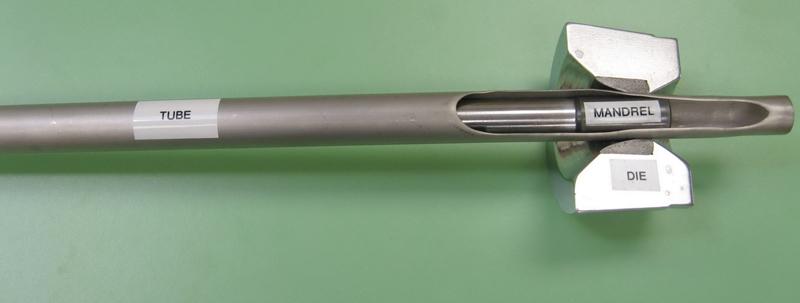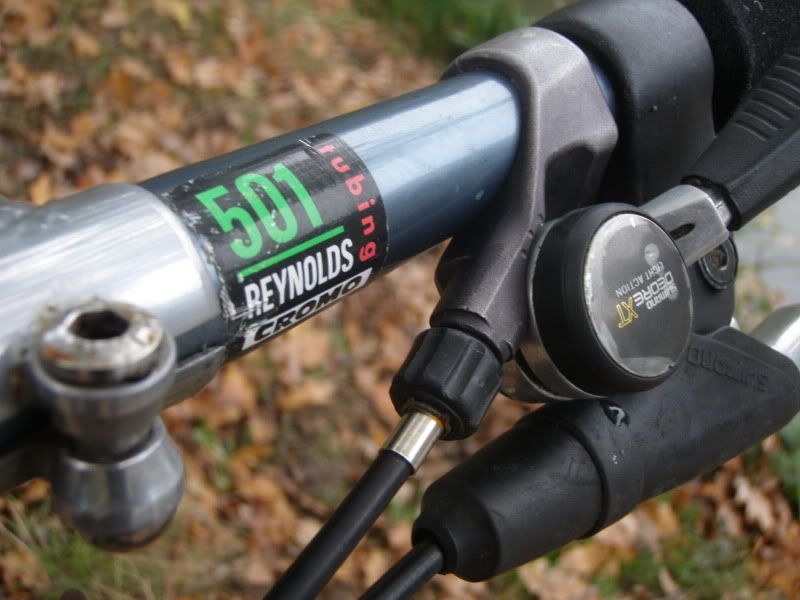You are using an out of date browser. It may not display this or other websites correctly.
You should upgrade or use an alternative browser.
You should upgrade or use an alternative browser.
Pace Stem combo reproduction
- Thread starter danson67
- Start date
Re:
That's the kind of thing. IIRC, Raleigh didn't trust the fatigue resistance of alum' for MTB handlebars, so only spec'd steel and titanium to begin with...(?)
Good to hear you've found the Avenir TT bar
- is that seamed like 501, does it make any difference?
That's the kind of thing. IIRC, Raleigh didn't trust the fatigue resistance of alum' for MTB handlebars, so only spec'd steel and titanium to begin with...(?)
Good to hear you've found the Avenir TT bar
- is that seamed like 501, does it make any difference?
Re:
I'm not sure if the bar is seamed or not. The TT frame tubing is seamed (rolled from a sheet then welded), but they then cold draw the tubing over a mandrel to equalise it, so it's pretty good, generally.
If it is seamed, I'll just have to go with however TT have aligned it.
I await its arrival...
All the best
I'm not sure if the bar is seamed or not. The TT frame tubing is seamed (rolled from a sheet then welded), but they then cold draw the tubing over a mandrel to equalise it, so it's pretty good, generally.
If it is seamed, I'll just have to go with however TT have aligned it.
I await its arrival...
All the best
bontyfiend
Retro Guru
- Feedback
- View
Re: Re:
?danson67":22sxzy5a said:but they then cold draw the tubing over a mandrel...
Attachments
Re:
Sadly no colourful primates involved ..but it's still pretty cool:
..but it's still pretty cool:

Vid here:http://youtu.be/O6lPTRofrcc
All the best,
Sadly no colourful primates involved

Vid here:http://youtu.be/O6lPTRofrcc
All the best,
- Feedback
- View
Re:
Wow there's got to be some serious force involved in that! Is it done at high temperatures? Getting the expanding puller to grip must take some serious loading.
Wow there's got to be some serious force involved in that! Is it done at high temperatures? Getting the expanding puller to grip must take some serious loading.
Re:
Nope, it's done cold with hydraulic presses. The tubes are annealed to be in a fairly ductile state, then normalised afterwards.
Here's Mike from Plymouth tube: http://youtu.be/zlueIHudt4k
The cold drawing process breaks up the larger crystals in the steel into small crystals. This produces a stronger material (ultimate tensile strength) by increasing the length of the crystal boundaries in the metal. Stresses are evenly distributed around the boundaries, so any given section of boundary experiences less stress, and hence is less likely to yield or crack. Same sort of difference as between a stick of glassy (seaside) rock and a sugar lump, icing or Edinburgh rock (if you've tried the stuff).
Double butting is even cooler, where instead of the mandrel, they machine a plug with the butts built in and draw the oversized, plain gauge tube over that. The plug is then captive inside the tube (held in by the butts formed on each end) The tube is then reeled to increase its diameter just enough to get the plug out, then is re-drawn back down to size...brilliant...Patented by Reynolds back in 1897.
With a few minor exceptions, Reynolds have only ever done simple round, even profile butts in round tubes. When you see some of the shaped, fluted, elliptical and assymetric stuff with special sections for bottle bosses and front mech mounts that Columbus was doing in the 90s (Nemo, Genius and Megatube).... :shock:
All the best,
Nope, it's done cold with hydraulic presses. The tubes are annealed to be in a fairly ductile state, then normalised afterwards.
Here's Mike from Plymouth tube: http://youtu.be/zlueIHudt4k
The cold drawing process breaks up the larger crystals in the steel into small crystals. This produces a stronger material (ultimate tensile strength) by increasing the length of the crystal boundaries in the metal. Stresses are evenly distributed around the boundaries, so any given section of boundary experiences less stress, and hence is less likely to yield or crack. Same sort of difference as between a stick of glassy (seaside) rock and a sugar lump, icing or Edinburgh rock (if you've tried the stuff).
Double butting is even cooler, where instead of the mandrel, they machine a plug with the butts built in and draw the oversized, plain gauge tube over that. The plug is then captive inside the tube (held in by the butts formed on each end) The tube is then reeled to increase its diameter just enough to get the plug out, then is re-drawn back down to size...brilliant...Patented by Reynolds back in 1897.
With a few minor exceptions, Reynolds have only ever done simple round, even profile butts in round tubes. When you see some of the shaped, fluted, elliptical and assymetric stuff with special sections for bottle bosses and front mech mounts that Columbus was doing in the 90s (Nemo, Genius and Megatube).... :shock:
All the best,
Similar threads
- Replies
- 3
- Views
- 742
- Replies
- 11
- Views
- 2K
- Replies
- 61
- Views
- 11K

